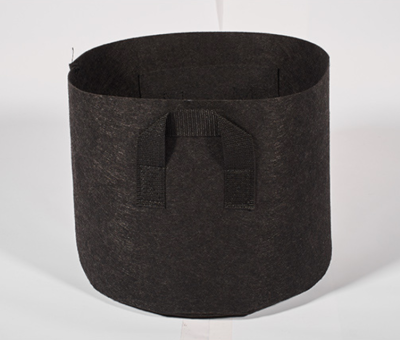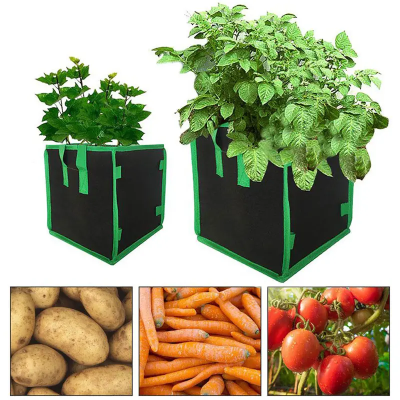Growing plants in fabric grow bags is a rewarding and straightforward process. Here’s a step-by-step guide to help you from seed to harvest:
- Choose the Right Grow Bag: Select a fabric grow bag of an appropriate size for your plant’s needs. Consider the depth, width, and volume requirements based on the type of plant you’re growing.
- Prepare the Grow Bag: Before filling the grow bag, moisten it with water. This activates the fabric and promotes better moisture retention and drainage.
- Fill the Grow Bag: Fill the grow bag with a high-quality, well-draining potting mix. Avoid using regular garden soil, as it may become compacted and hinder root growth. Leave a couple of inches of space from the top of the bag to allow for watering and prevent soil overflow.
- Planting Seeds or Seedlings:
- Seeds: Follow the instructions on the seed packet for sowing depth and spacing. Make small holes or furrows in the soil, place the seeds, and cover them with a thin layer of potting mix.
- Seedlings: Dig a small hole in the potting mix and carefully place the seedling, ensuring the roots are adequately covered. Gently press the soil around the base of the plant to secure it.
- Watering:
- Initial Watering: After planting, water the grow bag thoroughly to settle the soil and ensure good root-to-soil contact.
- Regular Watering: Monitor the moisture level of the soil and water the plants whenever the top inch of soil feels dry. Aim for consistent moisture but avoid overwatering, as fabric grow bags can dry out faster than traditional containers.
- Fertilizing:
- Organic Matter: Prior to planting, incorporate well-composted organic matter or slow-release organic fertilizer into the potting mix.
- Additional Fertilization: As the plants grow, provide additional nutrients based on their specific needs. Follow the recommended dosage and application instructions for the type of plant and fertilizer you’re using.
- Provide Support (if needed): Some plants, such as tomatoes or climbing vegetables, may require support structures like stakes or trellises. Install these support systems early in the growing process to prevent damage to the roots or foliage later on.
- Monitor Growth and Maintenance:
- Pruning and Training: Regularly prune and train your plants to maintain their shape and promote better air circulation. Remove dead or diseased leaves, and pinch or prune to control growth.
- Pest and Disease Control: Keep an eye out for pests and diseases. Implement appropriate preventive measures and address issues promptly to prevent them from spreading.
- Harvesting:
- Follow the specific guidelines for each plant to determine the right time for harvesting. This can vary depending on the variety and desired ripeness.
- Harvest fruits, vegetables, or herbs by gently removing them from the plant, taking care not to damage the roots or the rest of the plant.
- Reusing or Preparing for the Next Cycle:
- If the fabric grow bags are still in good condition, clean and store them for reuse in the next growing season.
- If the bags are worn out or damaged, responsibly dispose of them or consider repurposing them for other gardening projects.
Remember to adjust your growing practices based on the specific requirements of the plant species you’re cultivating. Enjoy the process of growing your plants in fabric grow bags and savor the fruits of your labor at harvest time!








